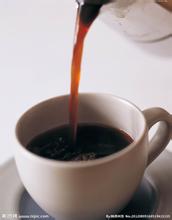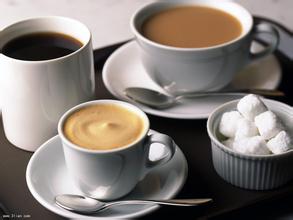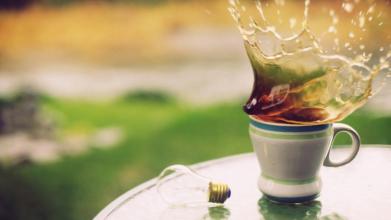What kind of coffee beans are just planted?
The traditional cappuccino / Cappuccino coffee is 1/3 espresso, 1/3 steamed milk and 1/3 foamy milk. Cappuccinos are divided into dry and wet ones. Dry cappuccino (Dry Cappuccino) refers to the conditioning method with more milk bubbles and less milk, and the coffee tastes stronger than milk flavor. Wet cappuccino (Wet Cappuccino) refers to the practice of fewer milk bubbles and more milk, with the smell of milk overshadowed by the thick smell of coffee, which is suitable for those with light taste. The coffee we drink is a drink made of coffee beans by roasting, grinding, brewing and adding different elements. The classification of coffee mainly uses two methods, one is the type of coffee beans, and the other is the method of making coffee itself.
Now, Africa, Central and South America and Southeast Asia are the main producers of coffee beans. There are many kinds of coffee beans. Generally speaking, the original coffee beans are mainly Arakabi and Robusta, and other kinds of coffee are their variants. Generally speaking, we distinguish coffee beans by origin, such as Brazilian coffee, Colombian coffee, Costa Rican coffee, etc., according to the variety of coffee beans and the climate of the place of origin, coffee made from different coffee beans will show different astringency, acidity and aroma.
The brewing methods of coffee are siphon, filter and steam pressurized, and the last one is the most commonly used brewing method in ordinary coffee shops. The coffee made by steam pressure is called Expresso, and other condiments and drinks are added to the espresso, which is the fancy coffee that we usually see in coffee shops. Take the coffee chain of a famous brand as an example, which offers fancy coffee such as Latte, Cppuccino, Mocha, Americano and Macchiato. The main difference between them is that other drinks are added. For convenience, we can use a formula to express:
Not all the land located in this area can produce good coffee trees. The ideal planting conditions of coffee trees are as follows: the temperature is between 15 ℃ and 25 ℃, and the annual rainfall must reach 1500 mm to 2000 mm. At the same time, the rainfall time should be in line with the flowering cycle of coffee trees. Of course, in addition to the coordination of seasons and rainfall, there should be fertile soil. The most suitable soil for growing coffee is a well-drained, fertile soil containing volcanic ash. In addition, although sunlight is an indispensable element for the growth and fruiting of coffee, too strong sunlight will dig out the growth of coffee trees, so various producing areas will usually cooperate with the planting of some sunshade trees. generally plant higher trunk plants such as bananas, mangoes and legumes. The ideal altitude is 500m ~ 2000 m above sea level. Therefore, the quality of Jamaican Blue Mountain coffee growing at an altitude of 800m ~ 1200 m is the best. It can be seen that the conditions for the cultivation of high-quality coffee are very strict: sunlight, rainfall, soil, air temperature, as well as the way coffee beans are harvested and the production process will affect the quality of coffee itself to match the flowering cycle of coffee trees. That's for sure. In addition to the coordination of seasons and rainfall, there should be fertile soil. The most suitable soil for growing coffee is fertile soil with good drainage and volcanic ash. In addition, although sunlight is an indispensable element for the growth and fruit of coffee, too strong sunlight will inhibit the growth of coffee trees. Therefore, various producing areas will usually cooperate with the planting of some sunshade trees, generally planting higher trunk plants such as bananas, mangoes and legumes. The ideal altitude is 500m ~ 2000 m, so the quality of Jamaican Blue Mountain coffee growing in 800m ~ 1200 m is the best. It can be seen that the conditions for the cultivation of high-quality coffee are very strict: sunlight, rainfall, soil, air temperature, as well as the way coffee beans are harvested and the production process will affect the quality of coffee itself. Hebei is not an ideal area for coffee cultivation. Although coffee trees are not suitable for cultivation in Hebei, it is recommended that coffee can be planted in most parts of the country.

Important Notice :
前街咖啡 FrontStreet Coffee has moved to new addredd:
FrontStreet Coffee Address: 315,Donghua East Road,GuangZhou
Tel:020 38364473
- Prev

An introduction to the market price analysis of the reasons affecting the price change of coffee beans
Market price analysis introduces seasonal factors: winter in the northern hemisphere is the biggest consumption season for coffee beans, which will lead to a surge in prices due to the inequality between supply and demand. In addition, since Brazil has a coffee harvest period from April to August, if any large-scale seasonal climate damage occurs during this period or at other times, it will easily lead to a surge in coffee bean prices. Pass
- Next

How to prolong the dehydration time of coffee bean roasting
How to prolong the dehydration time of coffee beans? the best baking time is 12 ~ 15 minutes. The time of roasting beans below Italian baking is longer. European and American fast fried or Japanese slow fried also have their own characteristics and flavor. In addition, when it comes to the oil production of beans, the more fat we drink, the better the taste, while the beans with less oil are thin and boring, but baked beans
Related
- Guji coffee producing area of Guji, Ethiopia: Humbela, Shakiso, Wulaga
- What is the most expensive variety of Qiloso in BOP multi-variety group?
- How to store the coffee beans bought home?
- Why are Yemeni coffee beans so rare now?
- Ethiopian Sidamo all Red Fruit Sun Sun Santa Vini Coffee beans
- SOE is mostly sour? What does it mean? Is it a single bean? what's the difference between it and Italian blending?
- Is Italian coffee beans suitable for making hand-brewed coffee?
- How to choose coffee beans when making cold coffee? What kind of coffee beans are suitable for making cold coffee?
- Just entered the pit to make coffee, what kind of coffee beans should be chosen?
- Can only Japan buy real Blue Mountain Coffee? What are authentic Jamaican Blue Mountain coffee beans?

